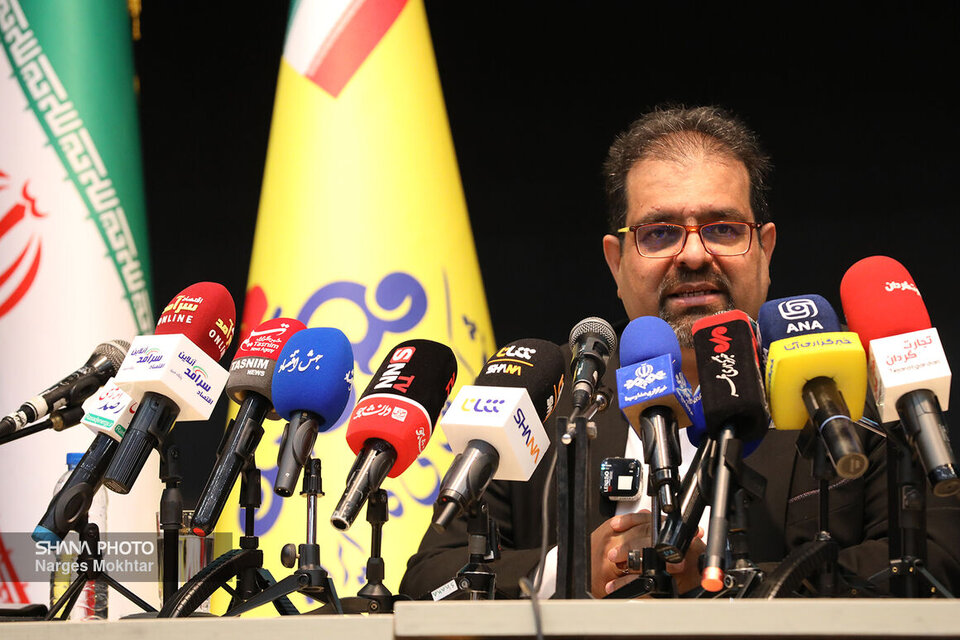Speaking at a press conference on the second day of the 29th International Oil, Gas, Refining & Petrochemical Exhibition (Iran Oil Show 2025), Tavakoli referenced sanctions imposed on Iran over the past 45 years. He noted that representatives from Asian countries have praised Iran’s performance under these conditions, highlighting on social media how sanctions have made Iran’s oil, gas, petrochemical, and related industries more agile and prepared.
Regarding last winter’s challenges, Tavakoli emphasized that the season set a record for its duration, intensity, and widespread cold. For the first time, dry gas production in Iran’s gas network reached 880 million cubic meters per day, a result of integrated management within the Oil Ministry. A 30 million cubic meter increase in gas production in less than three months was another example of this effective management.
Precise consumption and supply management amid gas shortages
Tavakoli, who also serves as deputy oil minister, pointed out that in November 2024, severe Scandinavian cold fronts reached 11 northern provinces, dropping temperatures by 12 degrees Celsius. Despite unfavorable conditions in gas-oil reservoirs, consumption and supply were meticulously managed through round-the-clock efforts.
Despite challenges, he said gas distribution continued uninterrupted, even in northern regions.
Increased gas transmission capacity, supply stability
Tavakoli said that despite challenges in 1403, NIGC performed better than the previous year. Seventeen pressure-boosting stations were activated, 30 turbo compressors were deployed in critical areas, and transmission capacity in the eastern corridor increased by 50 million cubic meters.
Even as major refinery maintenance continued into November 2023, gas supply remained stable. At times, refinery teams exceeded nominal capacity, delivering 39 million cubic meters instead of the standard 25 million—a result of calculated risk-taking and expert efforts.
Phasing out inefficient heaters
Tavakoli highlighted the low efficiency (60-70%) of Iran’s 20 million domestic heaters. Under an Economic Council resolution, production of high-efficiency heaters (over 85%) has been prioritized, with contracts already signed.
He noted that, with government support, these high-efficiency heaters are being distributed free of charge, replacing old units. Consumers only need to surrender their outdated heaters to NIGC.
Fair energy distribution, pricing
On gas pricing, Tavakoli said tariffs are set by the Planand Budget Organization. Last year, high-consumption users (tiers 11 and 12) faced significant price hikes, with some Tehran households receiving bills of 250-300 million tomans.
He stressed that pricing is a key tool in managing consumption, adding that households receive gas at much lower rates. The government prioritizes fair energy distribution and subsidies, encouraging efficient consumers with incentives.
Gas supply to power plants
Tavakoli noted that while all countries rely on an energy mix, Iran must use alternative fuels in winter. Last winter, despite industrial restrictions, no residential gas cuts occurred. This year, fuel supply to power plants has risen 16% compared to last year, with gas playing a larger role.
Gas trade, regional cooperation
Under Iran’s Seventh Development Plan, expanding gas cooperation with neighbors is mandatory. NIGC’s priority is boosting exports and establishing a regional hub with neighboring countries, though no serious plans exist for exports to Europe.
Regarding the gas swap deal among Turkmenistan, Iran, and Turkey, Tavakoli confirmed the government-to-government (G2G) contract remains active. Turkmenistan, with the world’s largest onshore gas reserves, is a key partner.
On talks with Russia, Tavakoli said discussions continue on pricing and payment mechanisms for a potential 55 billion cubic meter annual supply. Technical assessments are underway for possible transit through Azerbaijan, Armenia, or Georgia, as Iran and Russia lack a direct land border.
He stressed that gas imports could stabilize supply in northern Iran, where domestic production is insufficient. The project is part of NIGC’s legal obligations under the Seventh Development Plan.


Your Comment